|
|
Headlamp Bulbs for Vintage Bikes
By LoneStar
Many riders of vintage bikes find the original lighting equipment a bit disappointing, compared with modern lighting
that can scorch paint at 300 yards. I'm one of these, so have been looking into options for a brighter headlight on my Series C Black Shadow. This
discussion is based on my own search, but I hope it also will be of use for those in similar situations.
By way of background, these bikes were
supplied with Miller model 74CV headlamps, nominally 7" but with an actual reflector diameter of c. 6.5". The size means the reflector can't
be replaced with the more common 7" units, which are too large.
The original Miller reflector used a bulb holder (part # 106B)
accepting a large bulb with a BA15d base (Lucas 168); it was inserted from the front of the reflector. Modern replacement reflectors, though,
tend to be designed for British Pre-Focus (BPF) bulbs, as used on most British headlamps from the mid-1950s,
including the Series D Vincents. My bike has one of these units, also an original Miller 6V 50 watt dynamo - so I looked for a 6V bulb with a BPF design.
Note another name for BPF specification is 'P36D'. These were the alternatives I compared:
- Tungsten original-style 30/24W BPF bulb made in UK by Alite - Lucas 312 equivalent
- Halogen 35/35W BPF bulb, made in India - not branded
- Halogen 35/35W H4-style bulb with BPF base, made in Taiwan by Emgo
- LED bulb with BPF base, from Ebay seller in Spain - not branded
- LED bulb with BPF base, made in China by SOFOC
I ran four tests on these:
- Aimed the beam at a sheet of white paper c. 6 feet away, and photographed the beam pattern on high and low.
- This was to establish the shape of the beam. It needs to be focused forward in a tight pattern, and the low beam should
be cut off to avoid blinding oncoming traffic. Note the photos aren't an indication of relative brightness, since the camera adjusts automatically.
- Measured the distance between the filaments and the bulb base flange
- The light pattern depends on coordinated design of the bulb and the reflector.
The reflector is a parabolic shape, which reflects a point source of light (like a filament) directly forward in a
(nearly) parallel beam. This requires that the filament be in a specific position relative to the reflector, which is achieved
by the British Pre-Focus specification as applied to bulb, socket and reflector. The wrong filament location will
result in an unfocused light output.
- Measured the current draw at 6.5 volts, to determine actual watts used
- This is important for anyone running an original dynamo, where output is limited especially at low rpm.
- Measured the relative light output with a light meter (cell phone app)
- The cell phone app registers light in lux. The sensor was positioned just above the headlamp and aimed at the white paper. The figures
don't correspond exactly to the total light output measured in lumens, and are subject to variation based on factors like how tightly
the beam was focused on the paper. Still, they should be a useful indicator of relative output.
|
Filament Height, inches - Low
|
Filament Height, inches - High
|
Watts - Low
|
Watts - High
|
Output, lux - Low
|
Output, lux - High
|
|
.844
|
.844
|
24.2
|
32.5
|
19
|
22
|
|
This was a 30/24W bulb, as specified on the Series D Vincents. It served as a benchmark,
with the hope that something better could be found. Nothing wrong with it, just not very bright.
|

|
Filament Height, inches - Low
|
Filament Height, inches - High
|
Watts - Low
|
Watts - High
|
Output, lux - Low
|
Output, lux - High
|
|
1.00
|
1.00
|
23.7
|
23.7
|
16
|
16
|
|
This bulb, despite being made by skilled bulb craftsmen in India, had two problems: it was actually only 24W,
and the filaments were in the wrong location. This resulted in a weak and unfocused beam - note lower output than the
tungsten bulb.
|

|
Filament Height, inches - Low
|
Filament Height, inches - High
|
Watts - Low
|
Watts - High
|
Output, lux - Low
|
Output, lux - High
|
|
1.045 - 1.155
|
.728 - .875
|
30.0
|
32.2
|
18
|
31
|
|
An H4-style bulb, with lengthwise filaments and a shielded low beam. One result of the design is that the low filament is wrongly-located
for BPF; another is that the low beam shield cuts down light output significantly. Still, the high beam is pretty effective. I've had quality issues
with these, though - the solder joint at the contacts is poor and tends to fail.
|

LED Bulbs
Factors in Choosing an LED bulb:
- Polarity - Some units work only with negative or positive earth systems; others work with either. Be sure to check compatibility with your electrics.
- Color temperature - This determines the color of the light; the higher the number, the more blue the beam appears. Standard tungsten or halogen bulbs
are c. 3200K.
- Watts used - Normally lower than a filament bulb, so rarely an issue for dynamo capacity.
- Light output - Specified in lumens; generally the more the better. For dual-voltage units, is output the same at 6V and 12V?
Note that lumens
are not always listed, and when they are the numbers are sometimes inflated. To compare brightness between LED bulbs, you can look at their current draw
in watts instead. This is normally available, and accurate. The assumption is that most LEDs have similar efficiency in converting electricity to light.
- Low beam behavior - How is the low beam produced? Many designs have two banks of LEDs, so one might expect only one to be active on low beam -
not always the case. It's common for LED bulbs to have a poor cutoff on low beam, causing problems at night.
- Design - The most common design features an alloy heat sink, with one or more LEDs on each side. Beyond the two tested here, this type is sold
by Paul Goff in the UK,
and Clasic British Spares and Lowbrow Customs in the US. Lucas sells two, a low- and a high-power version. Most are claimed to work in either 6V or 12V systems.
It's a challenge for an LED bulb to emit
light from the correct point to work properly with a BPF reflector. Ideally light should come from a point source located exactly where the filaments would be
in a standard BPF tungsten bulb. Some suppliers come close to the ideal, others don't bother to try.
There are low-cost units with multiple LEDs arrayed
on the surface of a cylinder, but these tend to be very dim and in any case will not focus correctly.
Several suppliers offer bulbs which aim light forward through their own lens, rather than backwards to the reflector as customary.
You could paint the reflector black without affecting output. I haven't tested these, but would be curious about the low beam dip.
|

|
Filament Height, inches - Low
|
Filament Height, inches - High
|
Watts - Low
|
Watts - High
|
Output, lux - Low
|
Output, lux - High
|
|
.75 - 1.10
|
.75 - 1.10
|
5.7
|
9.9
|
27
|
47
|
|
This is the most common style of LED BPF headlamp bulb. I chose it because it has a 3000K color temperature,
and I wanted to avoid the blue tint found on most others - it stands out on an old bike. This bulb has good output and low current
draw, but it falls short in a couple of areas.
First, the high and low contacts are reversed relative to a standard BPF bulb. This isn't a big problem,
since you can either reverse the wires to the bulb socket or just live with the switch being in the wrong position. More significant is that there is no
dip in the low beam. High and low both employ both LED banks, so the beam direction is identical; the low beam is just dimmer. This would be a problem
for night riding, but my main concern is a bright daytime running light - so I'm reasonably satisfied with the unit. Update - I've bought three
of these, and two have now failed. The seller replaced one, to their credit. But they appear to be unreliable, and are not recommended.
|

|
SOFOC LED bulb with BPF base, from Amazon
|
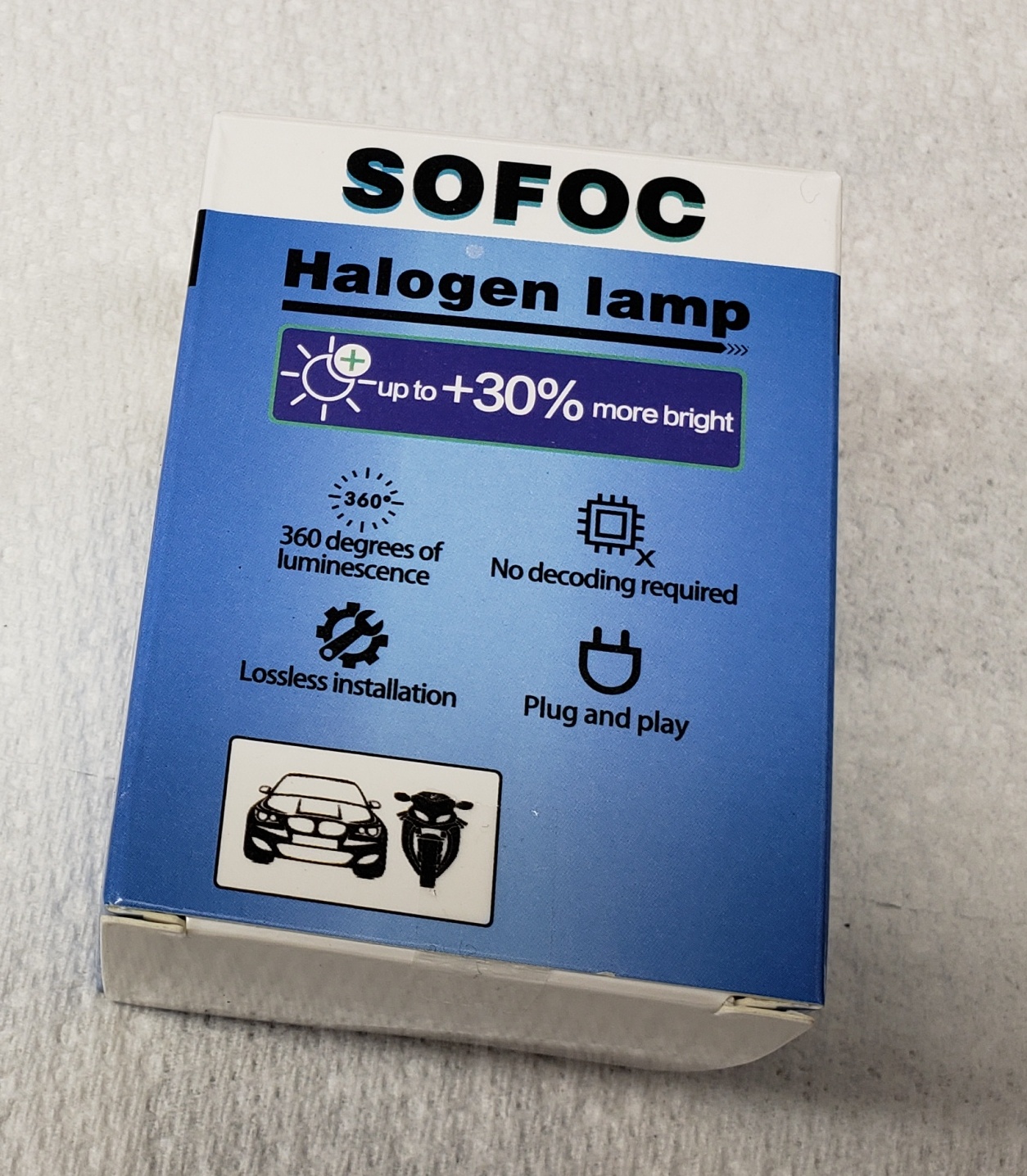
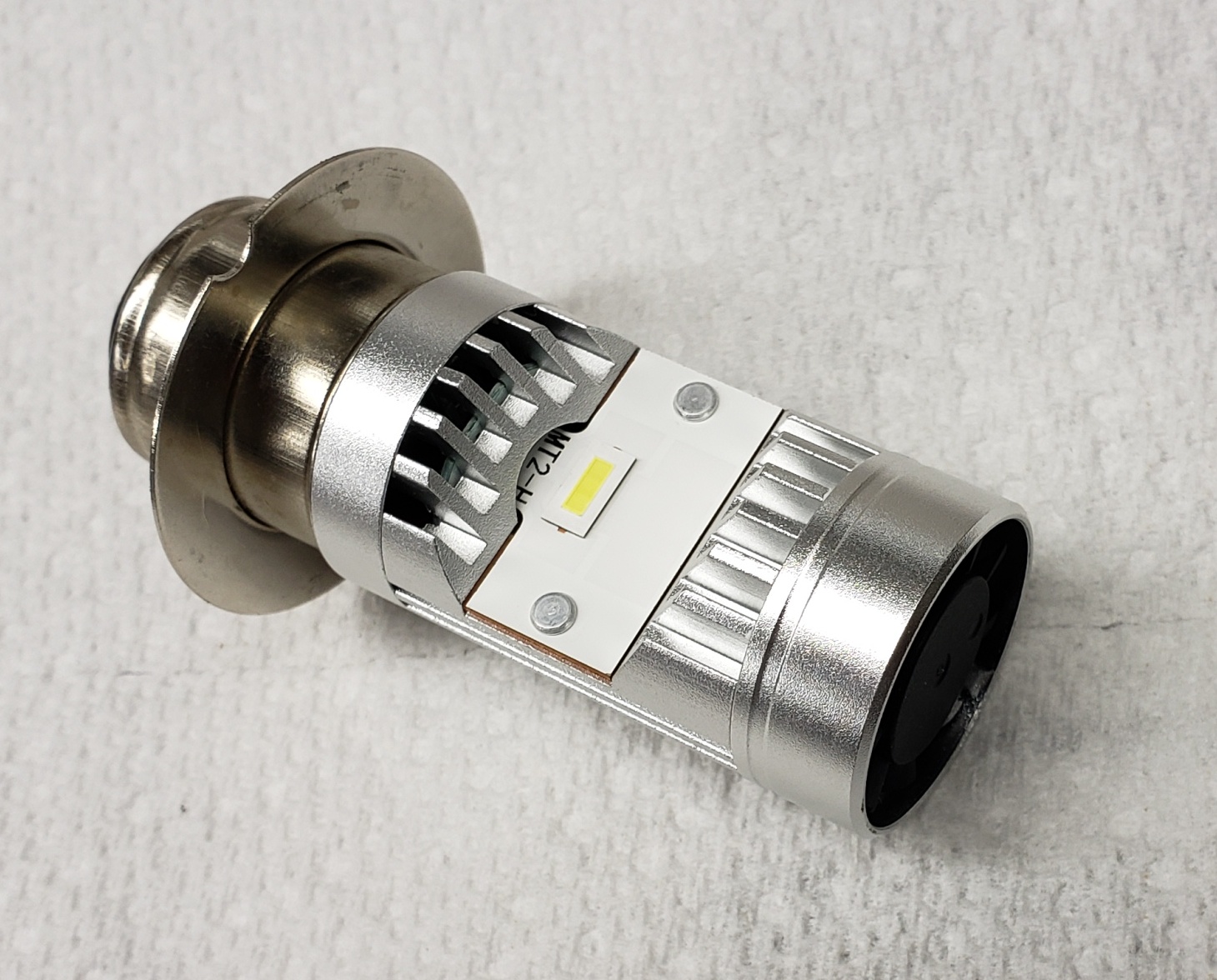
|
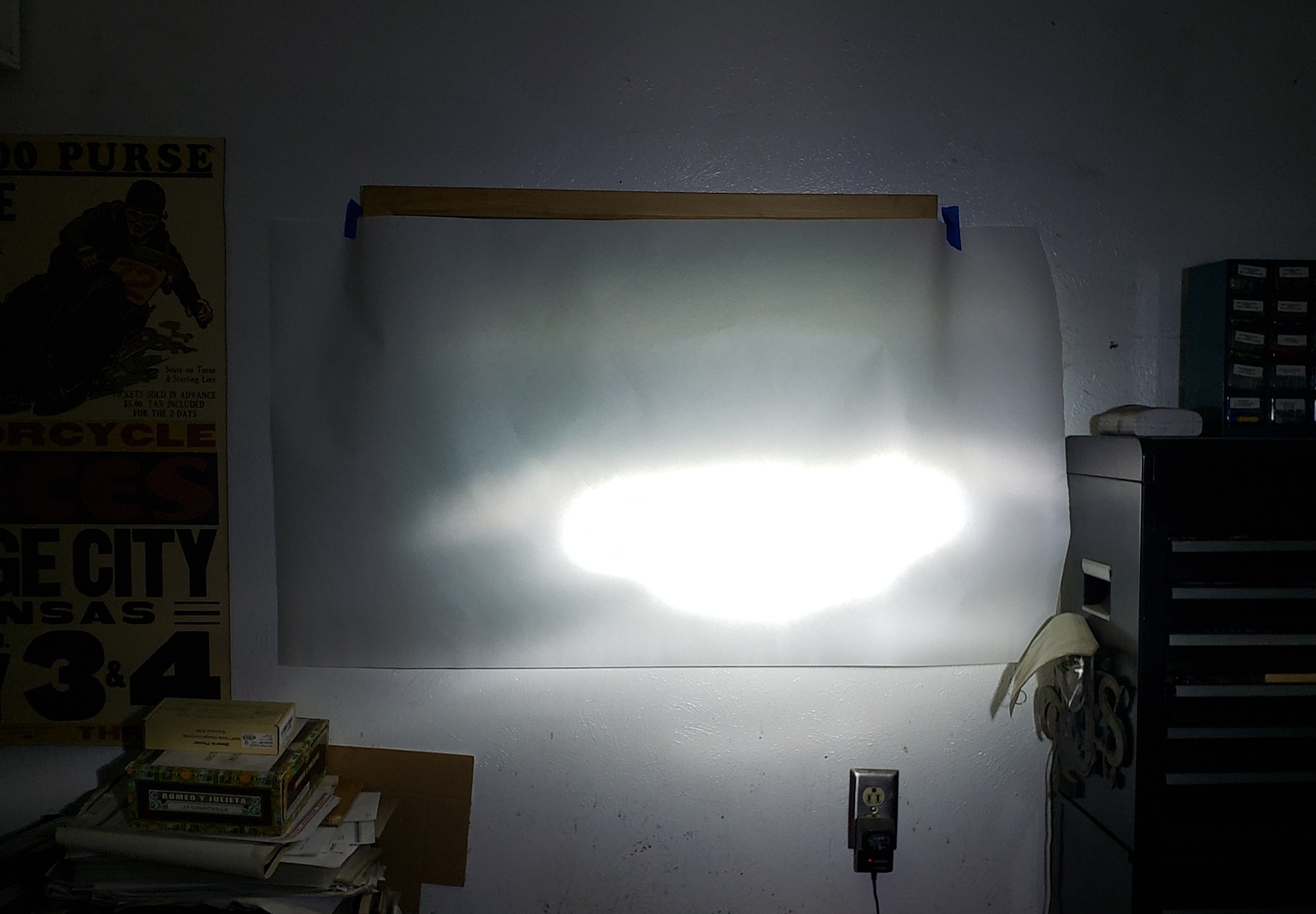 Low
|
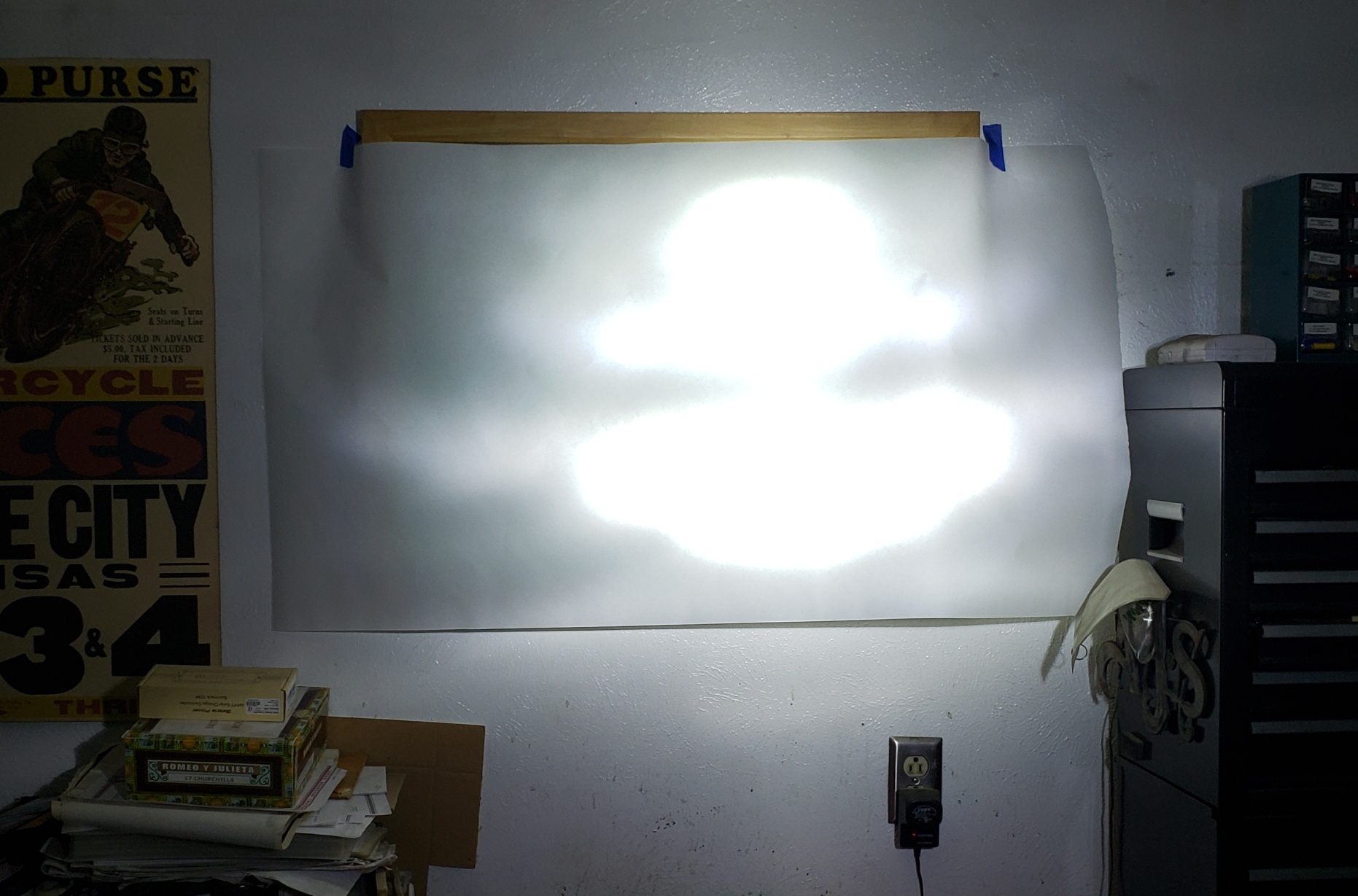 High
|
 Street - Low
|
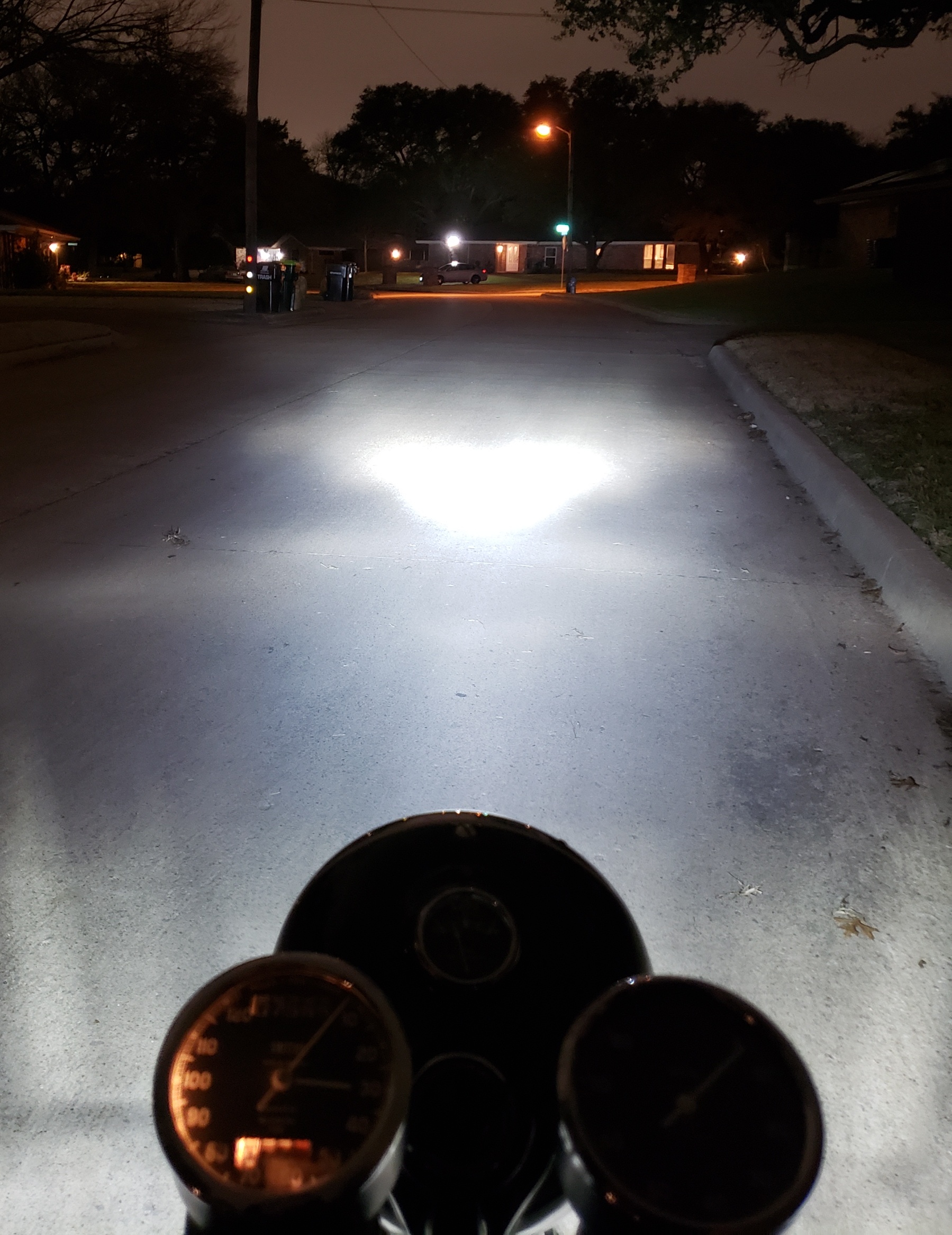 Street - High
|
|
Filament Height, inches - Low
|
Filament Height, inches - High
|
Watts - Low
|
Watts - High
|
Output, lux - Low
|
Output, lux - High
|
|
.93
|
.93
|
7.5
|
19.6
|
60
|
108
|
|
This bulb has a single LED each side of the heat sink, positioned close to the correct location for a BPF filament.
It uses one LED for low beam, and both for high - this gives it a good cutoff pattern on low. It's seriously powerful: five times as
bright as a standard tungsten bulb, and twice as bright as the Amazonas LED bulb. Power draw is correspondingly higher as well,
though still less than the bulb that the bike would have come with new - so well within the capacity of an original dynamo. This
bulb has a fan to draw air past the heat sink.
Color temperature is 6000K, making it looks a bit modern for an old bike. If this isn't an issue, the bulb is a great choice - and
less expensive than most competitors. It appears to be identical to the Ruiandsion ZLP36D-CSP-2-W-6-24V bulb sold on Ebay.
|
|